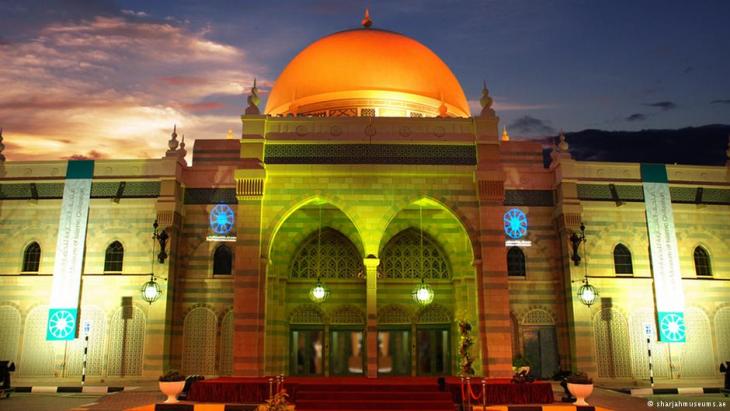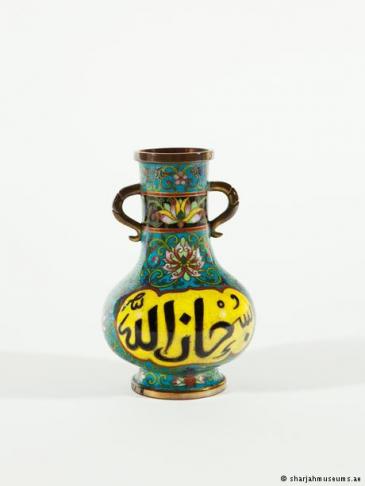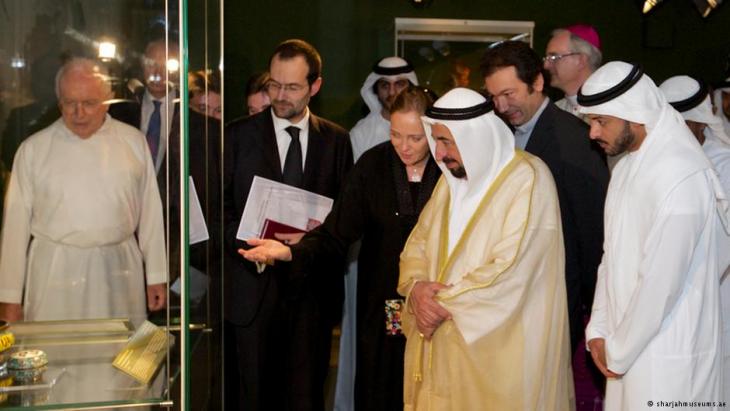Vatican treasures in the Gulf

Ulrike al-Khamis has outdone herself. In a project that began six years ago, the art historian from Germany was tasked with knocking the extensive collections of the Emir of Sharjah into shape when the Sharjah Museum of Islamic Civilization was renovated and re-opened. The exhibition she is now presenting in a sparkling domed building almost the size of a soccer field has exceeded expectations.
"It is the first collaboration between the Vatican and an Arab country," says al-Khamis. Indeed, the exhibition is one of a kind, not only because it presents excellent artworks but also because it furthers dialogue between Christians and Muslims.
The artworks from the Ethnological Museum of the Vatican that are on display in Sharjah date from the twelfth to the nineteenth centuries, but also include valuable objects from everyday life in the Arab world. Vases and bracelets, seals and armour, tapestries and precious daggers are on display. All the works come from the Islamic region stretching from Morocco via Sudan to Western China, but are now owned by the Vatican.
Many of the objects embody the dialogue between the Muslim and Western worlds. There's a dime-sized Koran produced in a print shop in Glasgow, and yellow mugs from Western China that bear an Arabic inscription surrounded by lotus flowers, which are a Buddhist symbol.
Gifts for the Pope

"We had only one year to prepare this show," said Ulrike al-Khamis. When the German art expert began advising in Sharjah, one of the emirates of the United Arab Emirates, she did not know what she was letting herself for.
"I travelled to Rome with my colleagues. We, the experts from Sharjah, and some Christian art historians searched the chambers of the Vatican together and discovered several pieces that had never been exhibited before," she recalled. The result is a unique show in Sharjah that gives a comprehensive look at Islam.
Most of the objects now on show arrived in the Vatican in 1925 when Pope Pius XI hosted a kind of international cultural exhibition comprised of gifts presented to him from private donors and missionaries stationed all around the world. There were artworks by Australian aborigines as well as pieces from Latin America, Asia and Polynesia. From the Islamic world, there were swords and seals, jewellery and garments. It was a truly global exhibition.
Around 100,000 works of art were collected in Rome for the show, but needed a permanent location after that. In 1926, the Pope established a new museum to keep the works, the Ethnological Museum, which was housed in the Lateran Palace. Half a century later, the museum was relocated to its present site in the Vatican.
However, it has been shut down several times since then and never fully reopened. The museum's current director, Father Nicola Mapelli, has sought to make the collection's works available via partnerships with other cultural institutions such as the Sharjah Museum of Islamic Civilization.

The art of diplomacy
In the case of Sharjah, the Vatican's museum found a like-minded partner. The small emirate is led by Sultan al-Qasimi, an intellectual interested in culture who has written a number of books and is interested in furthering intercultural dialogue. More than 20 years ago, al-Qasimi launched the most important biennial for contemporary art in the Arab world, the Sharjah Biennial; more than 40 museums have been established during his reign.
The fact that Rome is lending its works for the first time is an act of diplomacy in line with Pope Francis's current policies. While Pope Benedict XVI had distanced himself from other religions, his successor is pursuing a different policy. In October last year, during a speech for the sponsors of the Ethnological Museum, Pope Francis pointed to the unifying role of culture in religious, social and moral matters.
In the exhibition catalogue, the Vatican writes that it treats the Islamic objects "with the same degree of respect as it does works by Leonardo da Vinci, Raphael and Michelangelo." Fittingly, the title of the exhibition is "So that you may know each other." which is actually a verse from the Koran in response to the question of why people are so different.
Mutual understanding between Christians and Muslims is exactly what the exhibition seeks to promote. Taking history into account, dialogue between the religious groups cannot be taken for granted.
Werner Bloch
© Deutsche Welle 2014
Editor: Kate Müser/DW and Aingeal Flanagan/Qantara.de